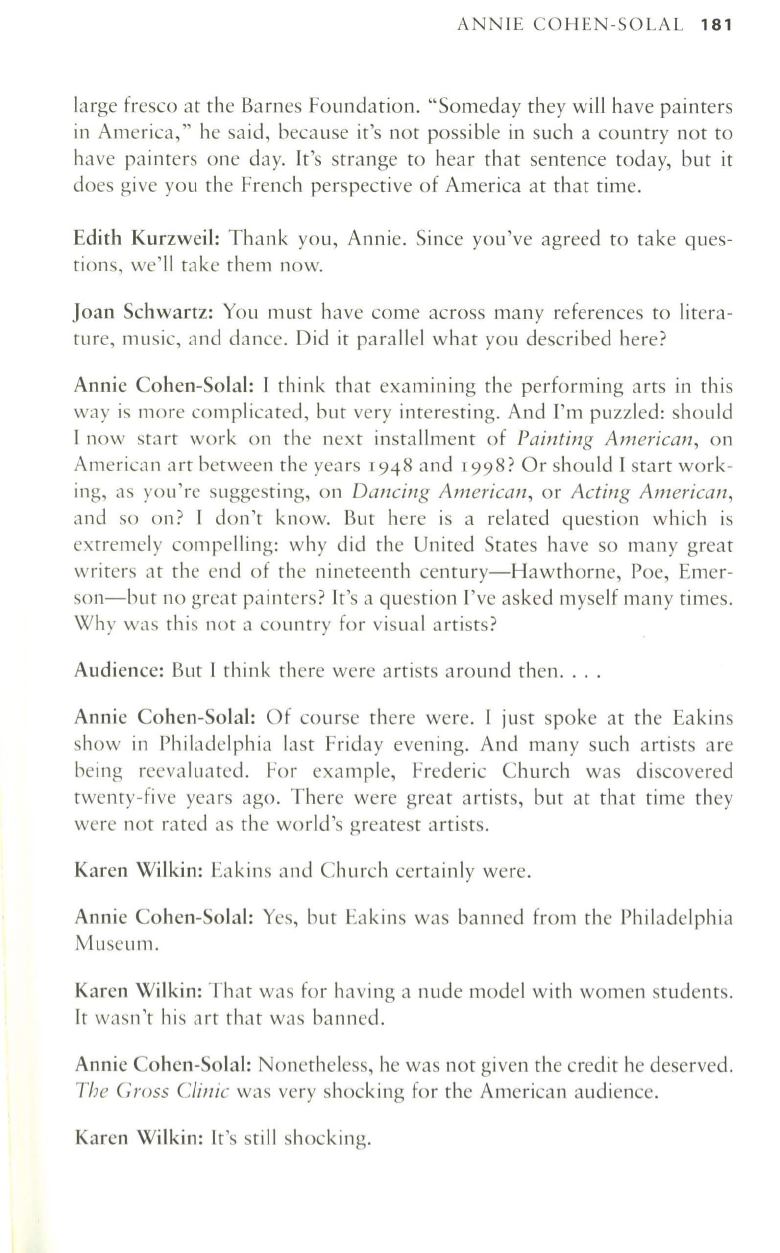
ANNIE COHEN-SOLAL
181
large fresco at the Barnes Foundation. "Someday they will have painters
in America," he said, because it's not possible in such a country not to
have painters one day. It's strange to hear that sentence today, but it
does give you the French perspective of America at that time.
Edith Kurzweil: Thank you, Annie. Since you've agreed to take ques–
tions, we'll take them now.
Joan Schwartz: You must have come across many references to litera–
ture, music, and dance. Did it parallel what you described here?
Annie Cohen-Solal: I think that examining the performing arts in this
way is more complicated, but very interesting. And I'm puzzled: should
Inow start work on the next installment of
Painting American,
on
American art between the years 1948 and 1998? Or should I start work–
ing, as you're suggesting, on
Dancing American,
or
Acting American,
and so on? I don't know. But here is a related question which is
extremely compe lling: why did the United States have so many great
writers at the end of the nineteenth century-Hawthorne, Poe, Emer–
son-but no great painters? It's a question I've asked myself many times.
Why was this not a country for visual artists?
Audience: But I think there were artists around then ....
Annie Cohen-Solal: Of course there were . I just spoke at the Eakins
show in Philadelphia last Friday evening. And many such artists are
being reevaluated. For example, Frederic Church was discovered
twenty-five years ago. There were great artists, but at that time they
were not rated as the world's greatest artists.
Karen Wilkin: Eakins and Church certainly were.
Annie Cohen-Solal: Yes, but Eakins was banned from the Philadelphia
Museum.
Karen Wilkin: That was for having a nude model with women students.
It wasn't his art that was banned.
Annie Cohen-Solal: Nonetheless, he was not given the credit he deserved.
The Gross Clinic
was very shock ing for the American aud ience.
Karen Wilkin: It's still shocking.


